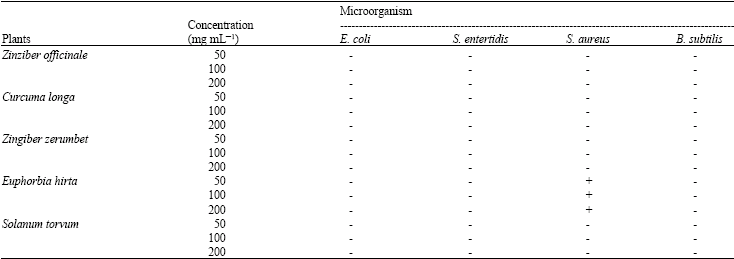Research Article
The Effect of Selected Sterilization Methods on Antibacterial Activity of Aqueous Extract of Herbal Plants
Department of Animal Science, Universiti Putra Malaysia, 43400 UPM Serdang, Selangor, Malaysia
I. Zulkifli
Department of Animal Science, Universiti Putra Malaysia, 43400 UPM Serdang, Selangor, Malaysia
Z. Zunita
Department of Veterinary Pathology and Microbiology, Universiti Putra Malaysia, 43400 UPM Serdang, Selangor, Malaysia
M.N. Somchit
Department of Biomedical Sciences, Universiti Putra Malaysia, 43400 UPM Serdang, Selangor, Malaysia











